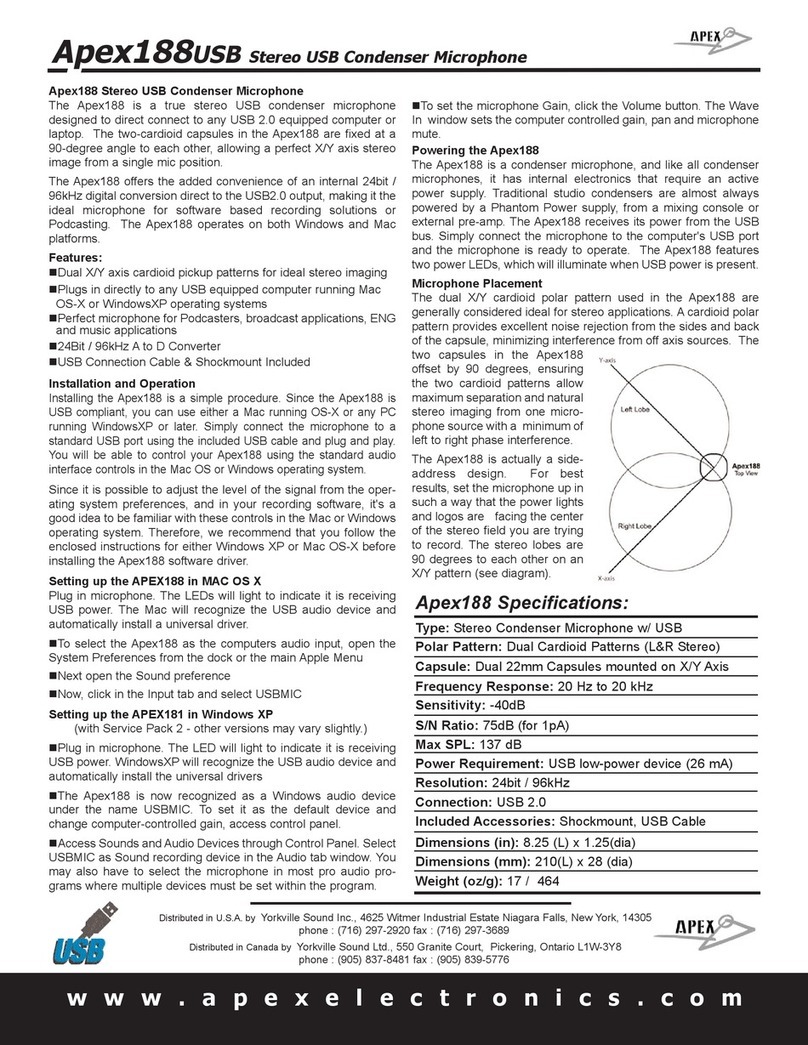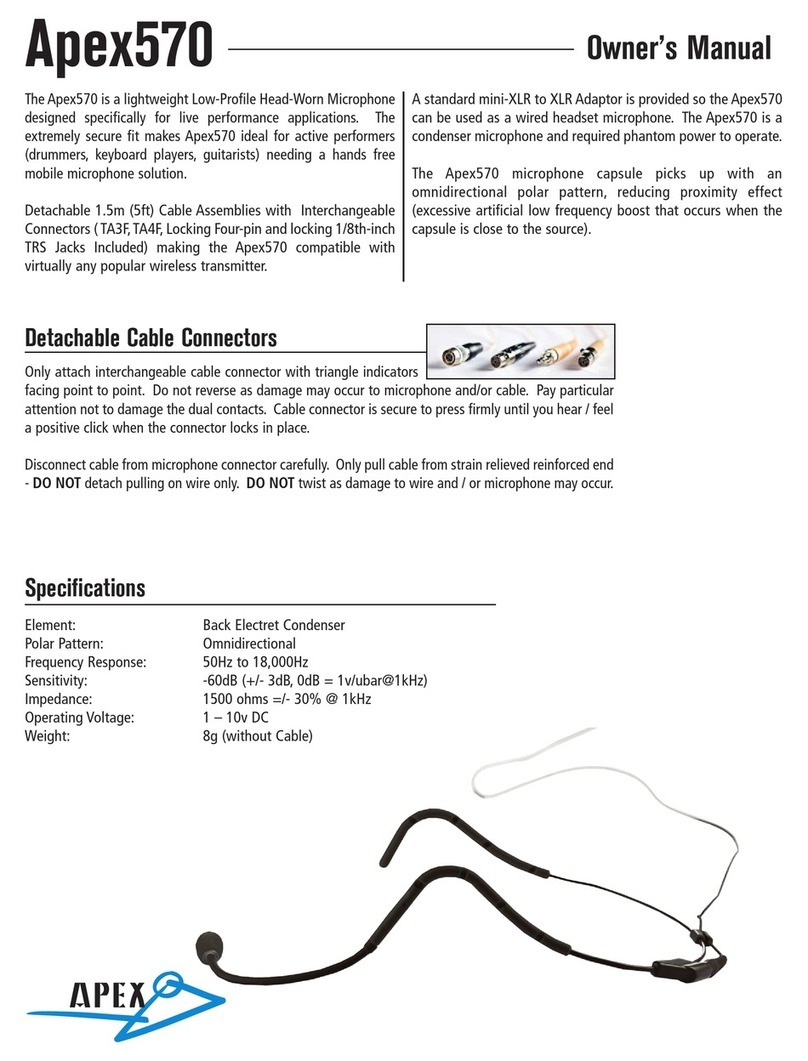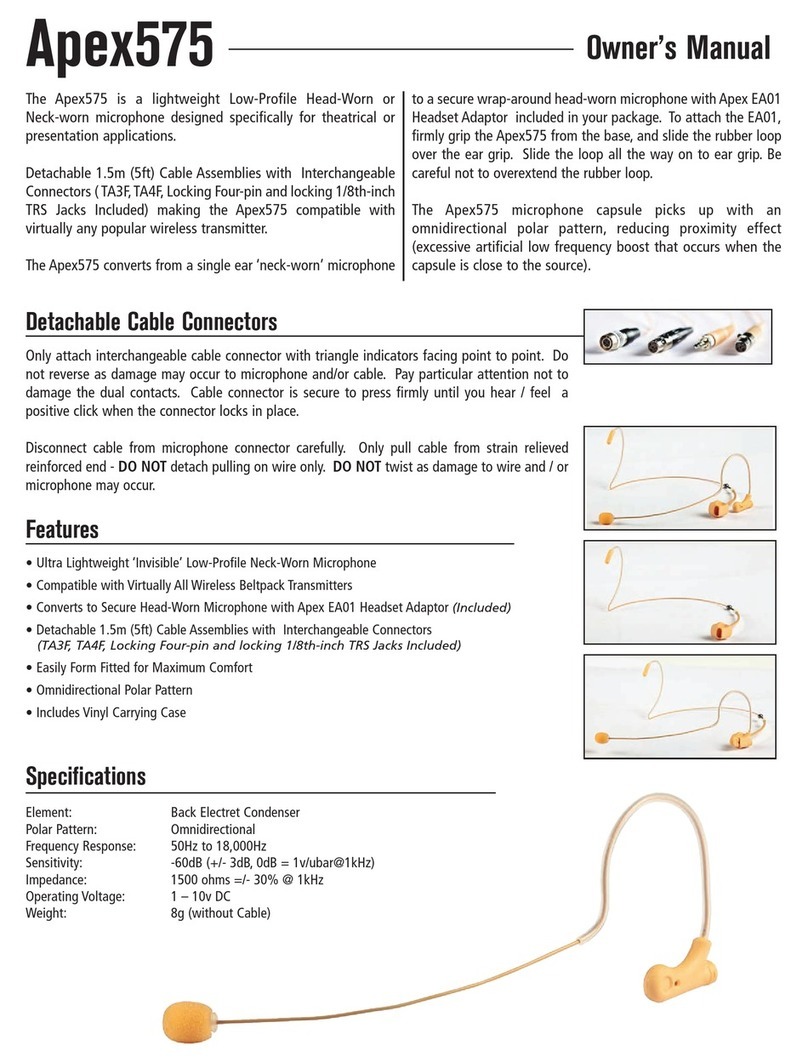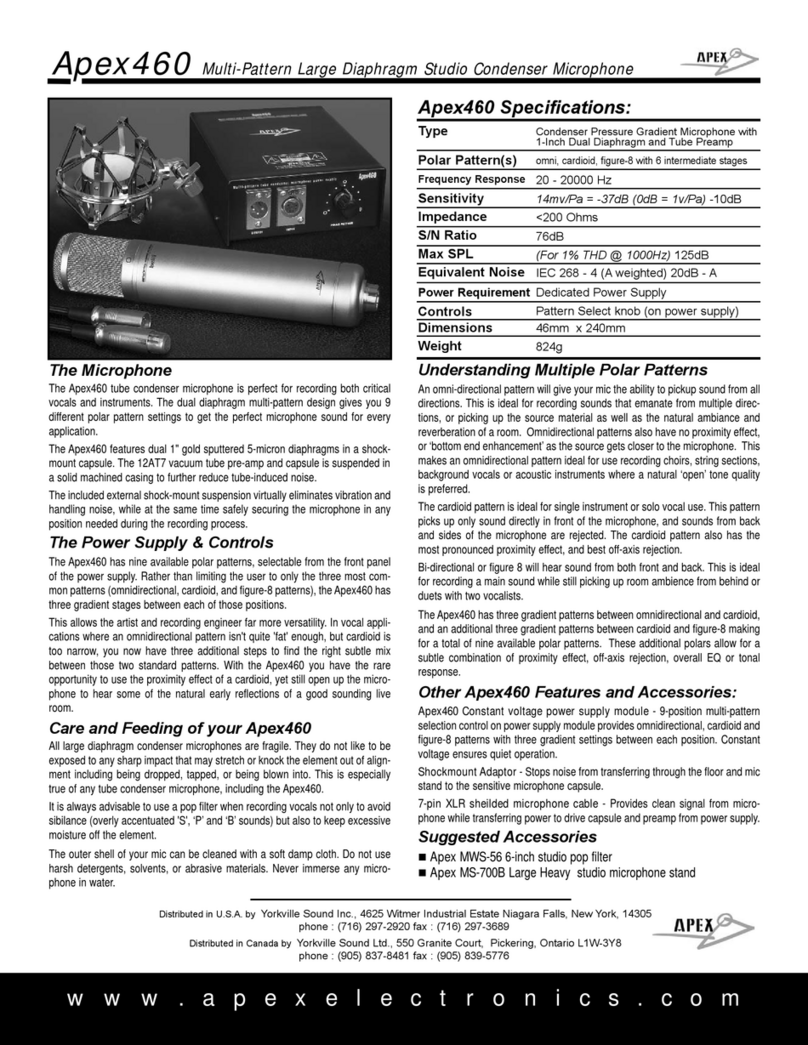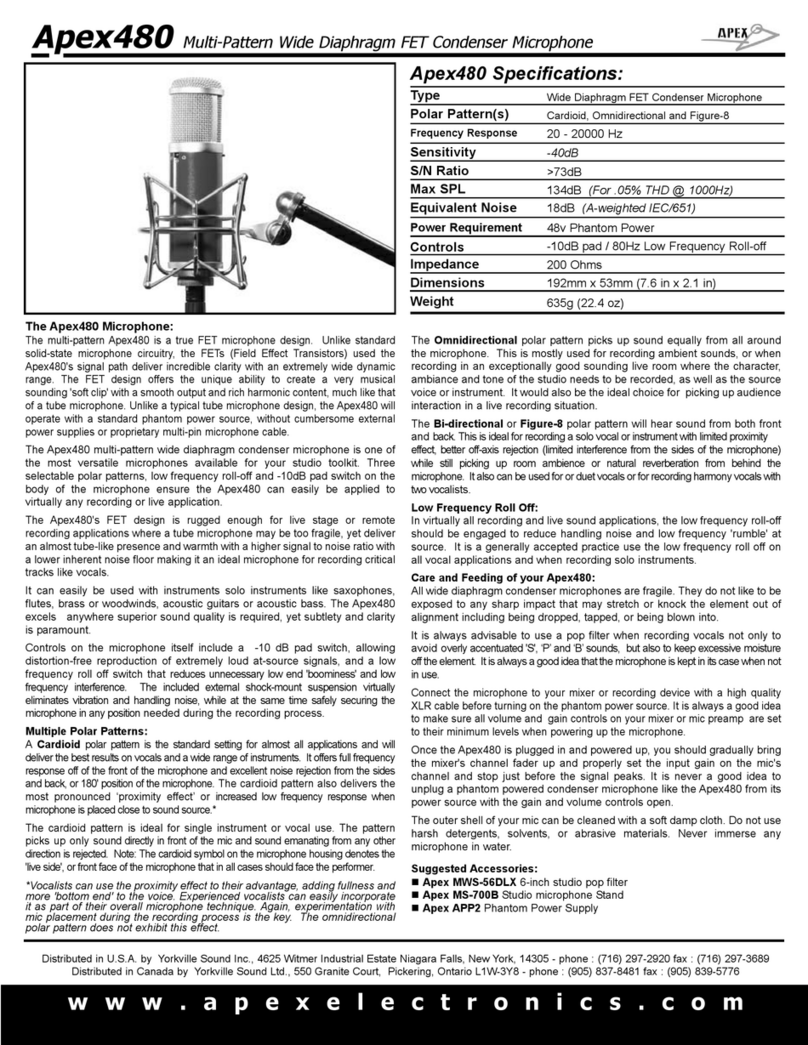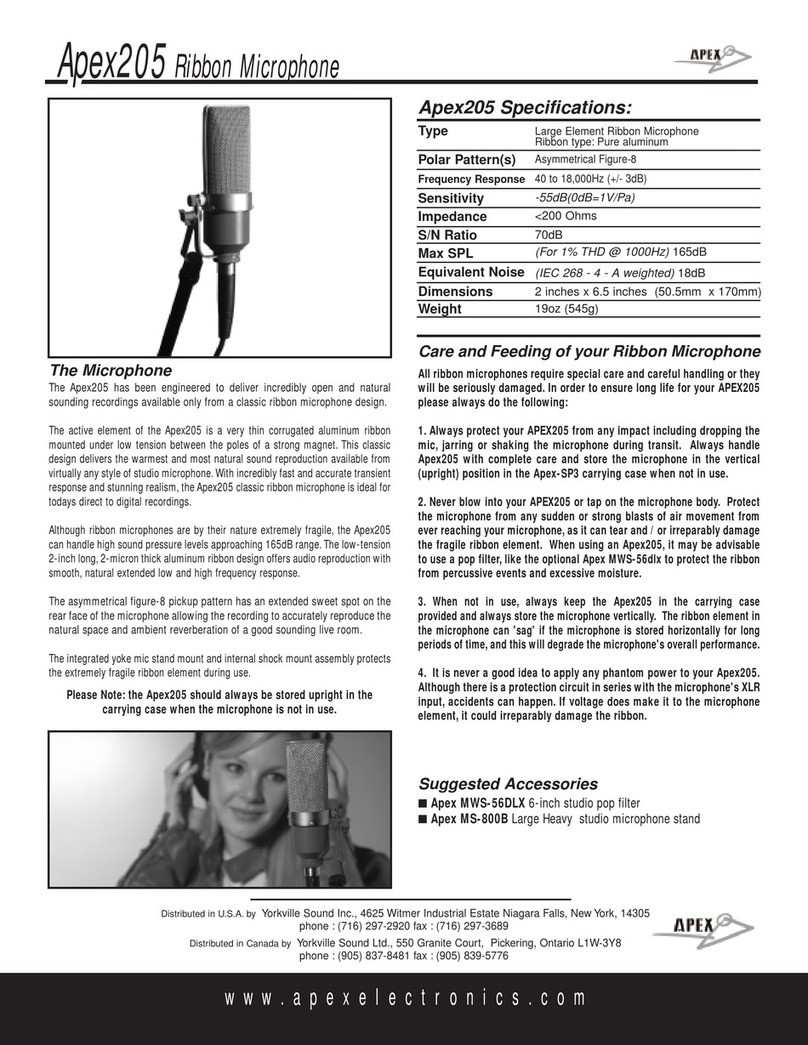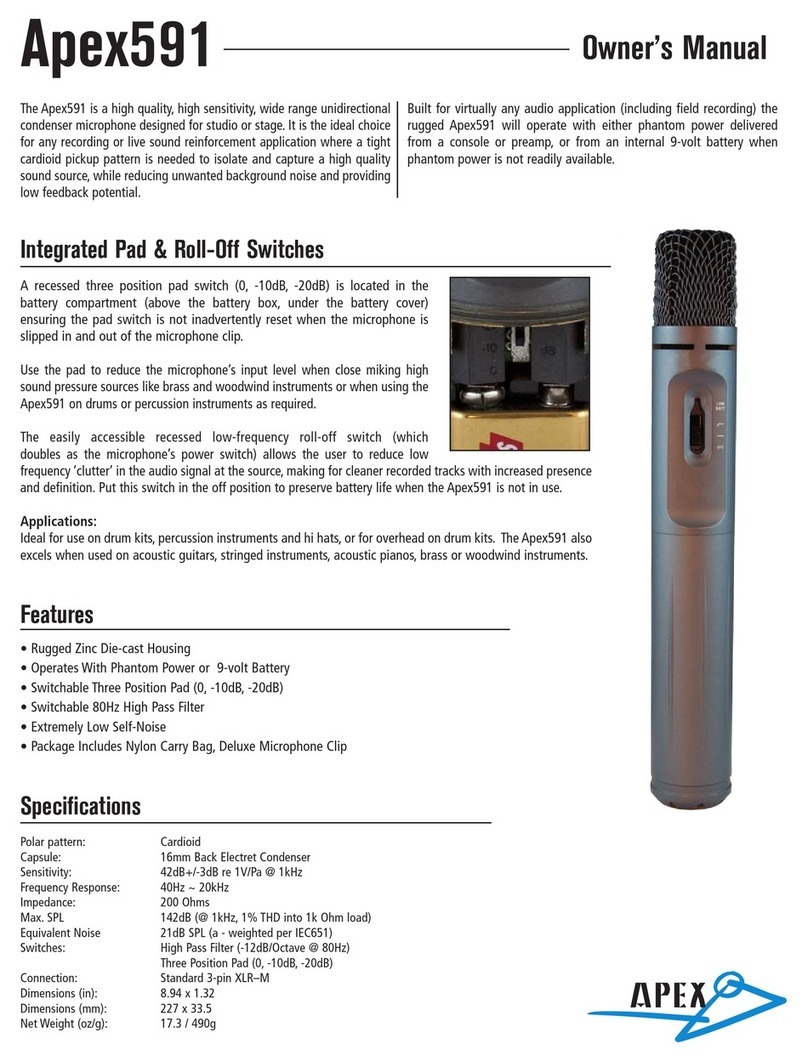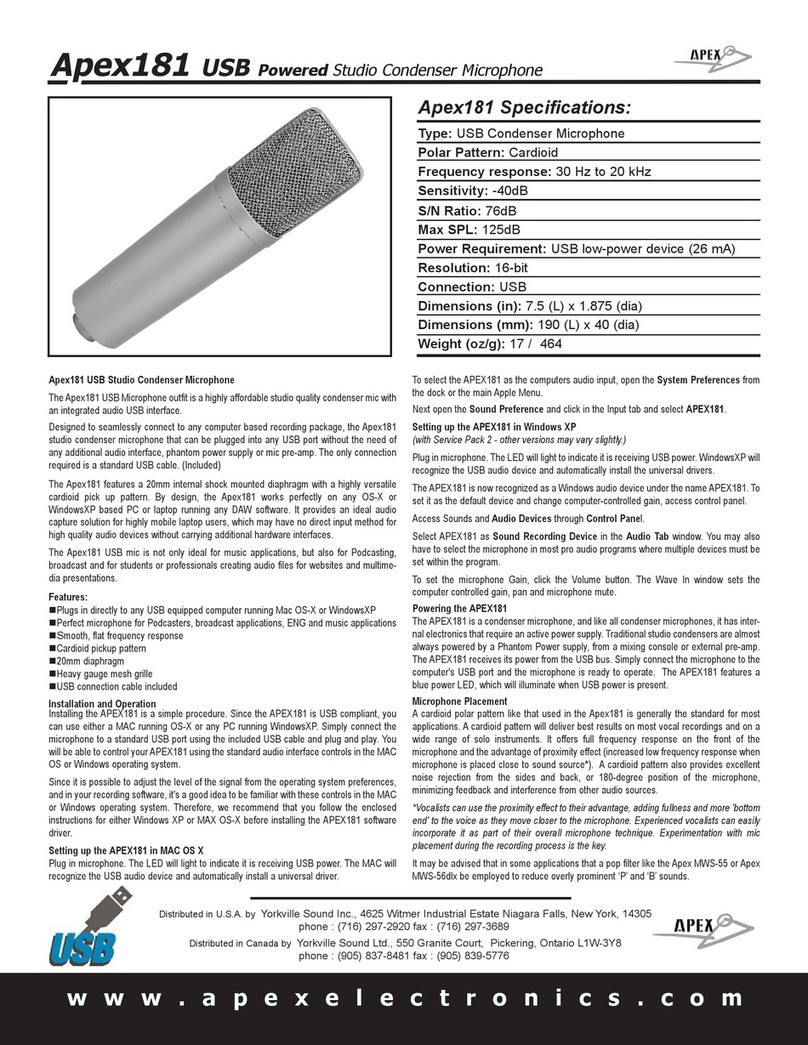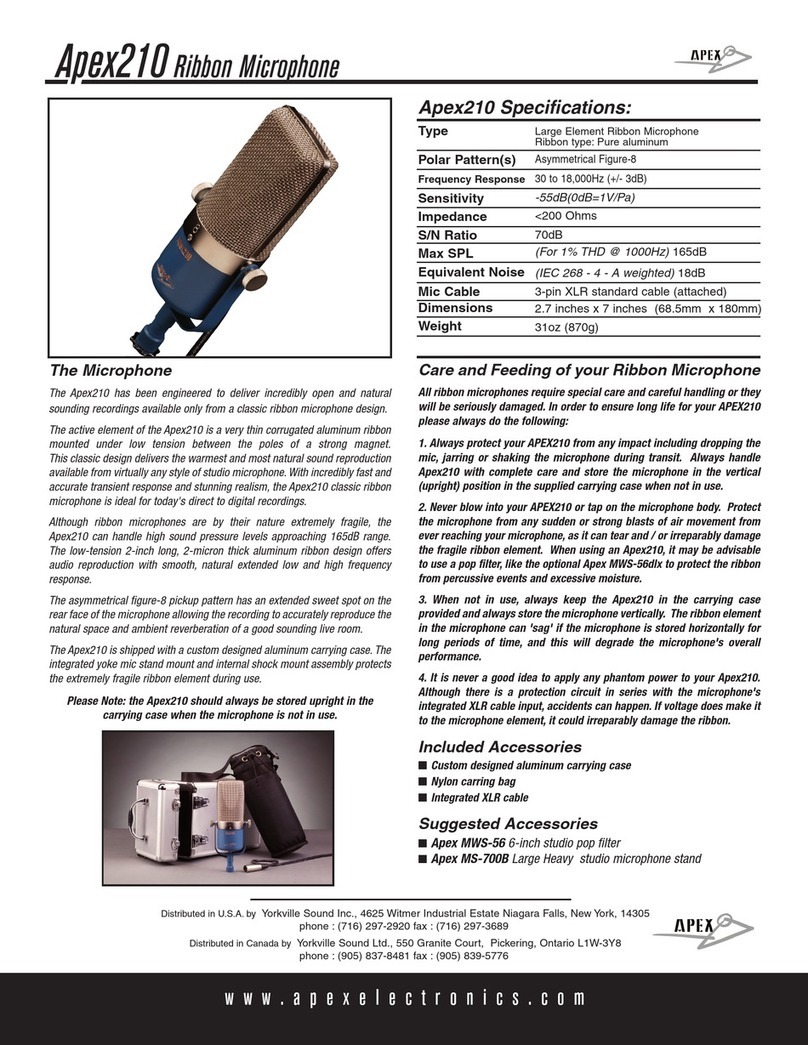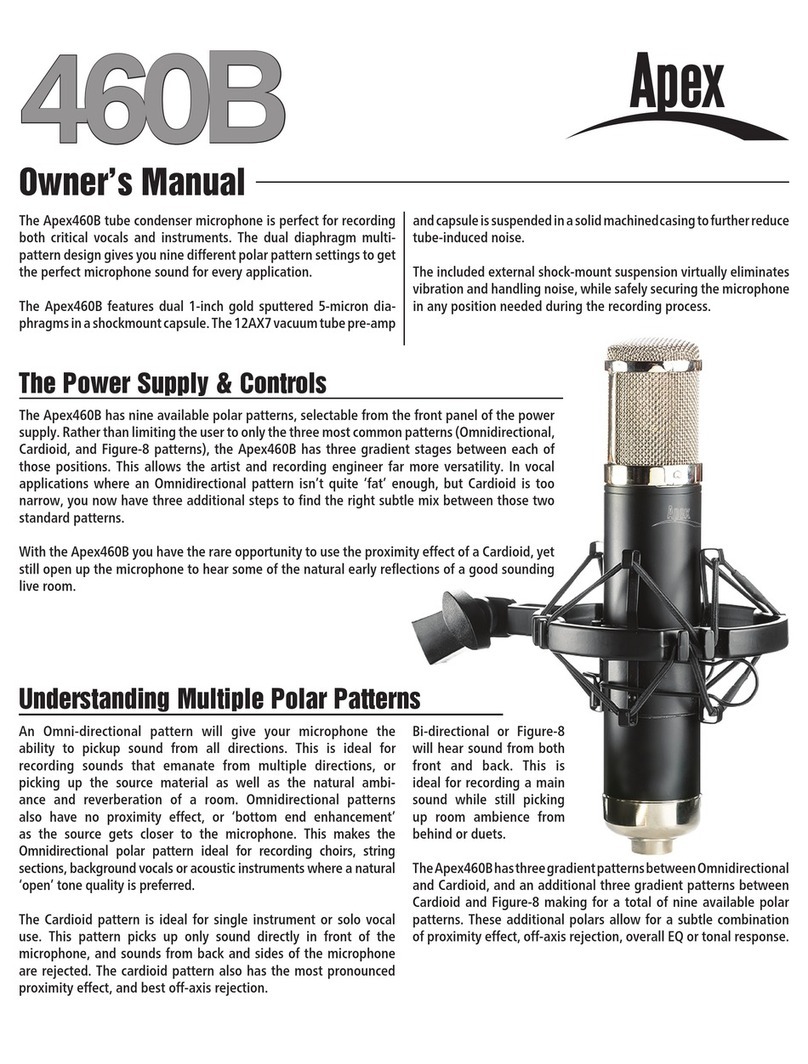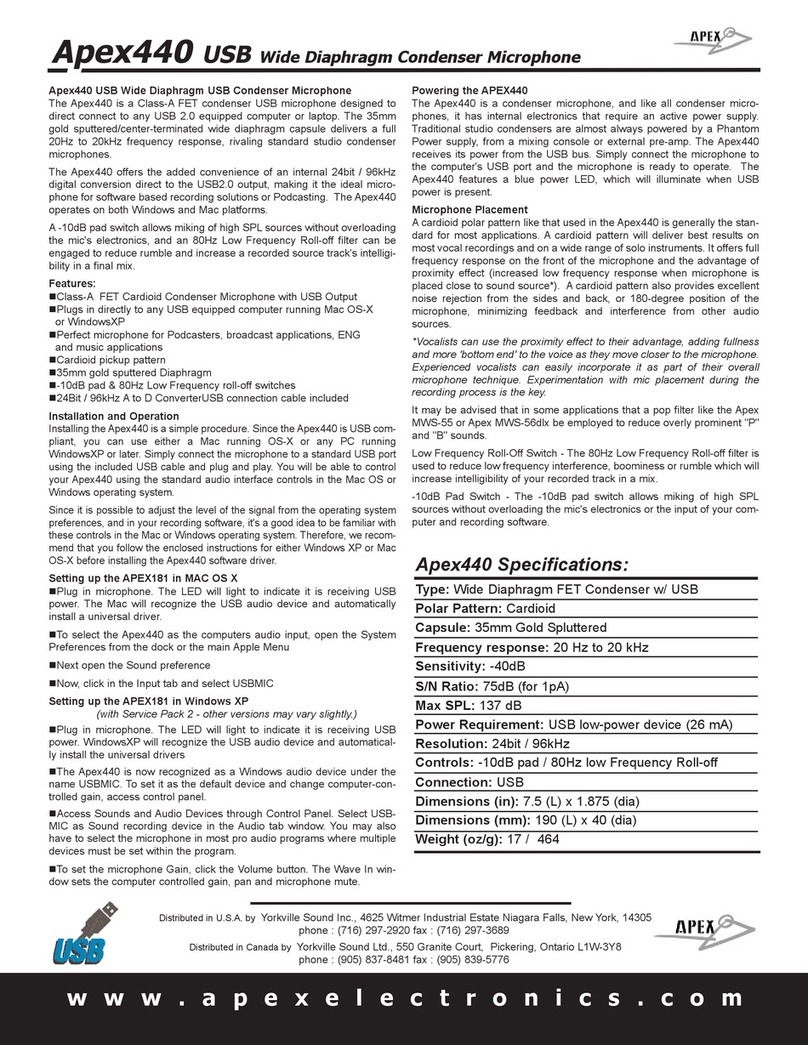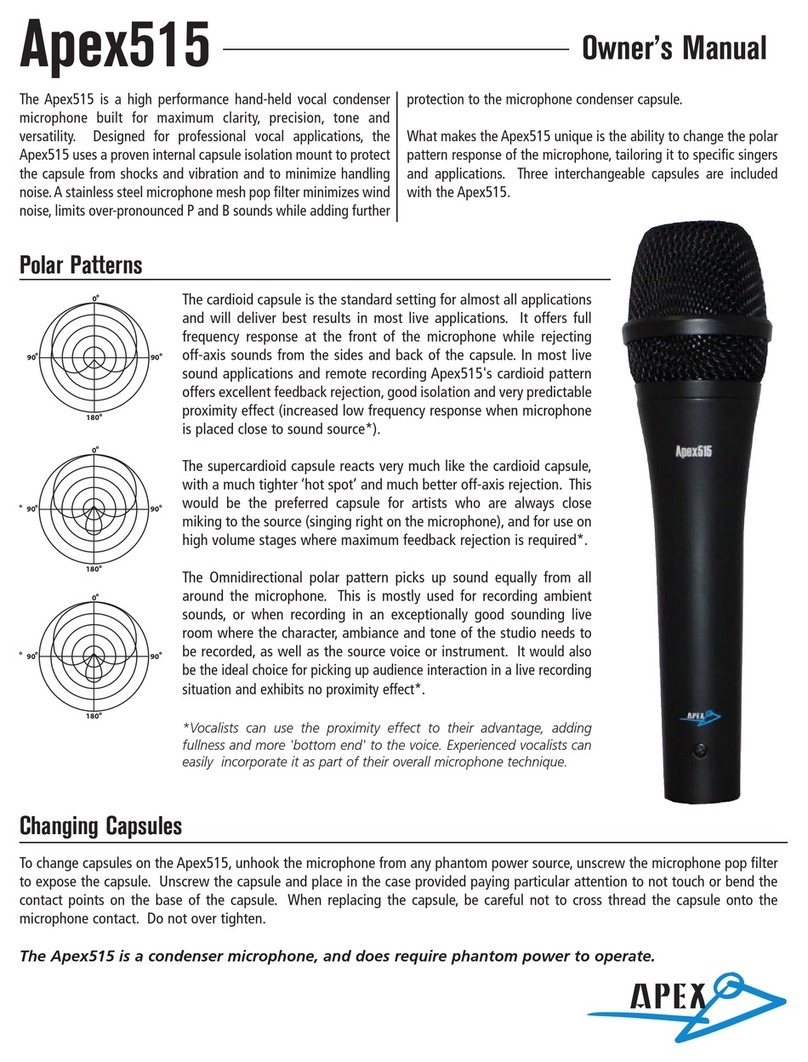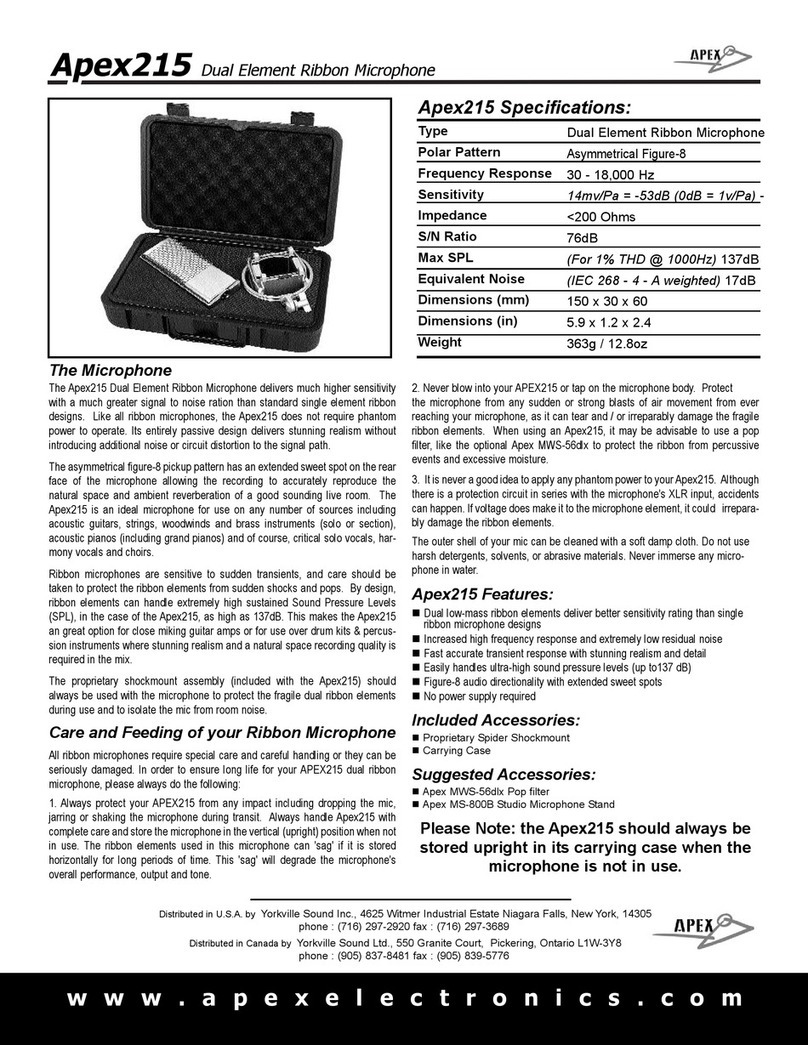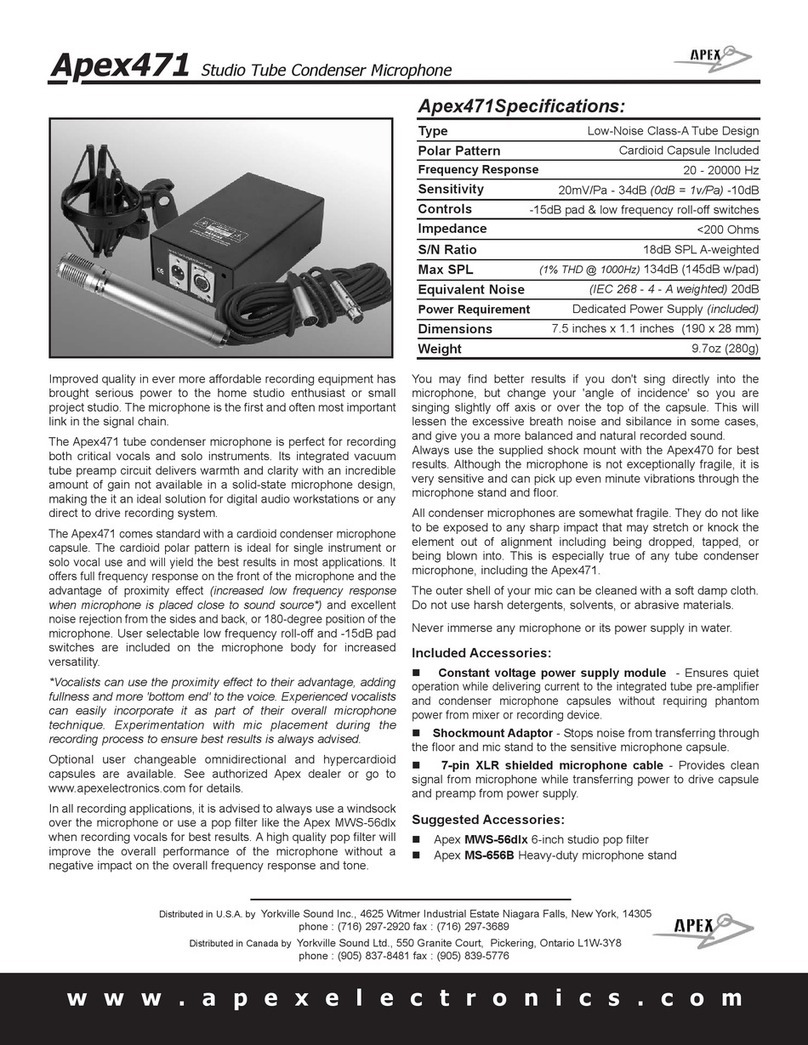
Setting up the Apex555in Windows XP (with Service Pack 2 - other versions may vary slightly.)
Plug in microphone. The LED will light to indicate it is receiving USB power. WindowsXP will recognize the
USB audio device and automatically install the universal drivers
The Apex555is now recognized as a Windows audio device under the name USBMIC. To set it as the
default device and change computer-controlled gain, access control panel.
Access Sounds and Audio Devices through Control Panel.
Select Apex555 as Sound recording device in the Audio tab window. You may also have to select the
microphone in most pro audio programs where multiple devices must be set within the program.
To set the microphone Gain, click the Volume button. The Wave In window sets the computer controlled
gain, pan and microphone mute.
Select Apex555 as the Output Device in the Audio Tab Window and set level.
Powering the Apex555
The Apex555 is a condenser microphone, and like all condenser microphones, it has internal electronics
that require an active power supply. Traditional studio condensers are almost always powered by a
Phantom Power supply, from a mixing console or external pre-amp. The Apex555 receives its power from
the USB bus. Simply connect the microphone to the computer’s USB port and the microphone is ready to
operate. The Apex555 features a power LED, which will illuminate when USB power is present.
Microphone Placement
A cardioid polar pattern like that used in the Apex555 is generally the standard for most applications. A
cardioid pattern will deliver best results on most vocal recordings and on a wide range of solo
instruments. It offers full frequency response on the front of the microphone and the advantage of
proximity effect (increased low frequency response when microphone is placed close to sound source*).
A cardioid pattern also provides excellent noise rejection from the sides and back, or 180-degree position
of the microphone, minimizing feedback and interference from other audio sources.
*Vocalists can use the proximity effect to their advantage, adding fullness and more 'bottom end' to the
voice as they move closer to the microphone. Experienced vocalists can easily incorporate it as part of
their overall microphone technique. Experimentation with mic placement during the recording process is
the key.
Specifications
Type: USB Condenser Microphone
Capsule: 32mm Gold Sputtered Diaphragm
Polar Pattern: Cardioid
Frequency Response: 20 – 20,000Hz
Maximum SPL: 130dB (1 kHz < 1% THD)
Sensitivity: -35dB +/- 2dB (0 dB=1v/pa@1kHz)
Equivalent Noise: <20dB (A-Weighted)
Signal to Noise Ratio: 86dB
Sample Rate: 192kHz (16bit AD/DA Converter)
Other Features: Integrated -10dB pad switch, Input gain, Output Volume and
Monitor Source Mix Controls, LED Power Indicator, USB 2.0
Windows and Mac Compatible
